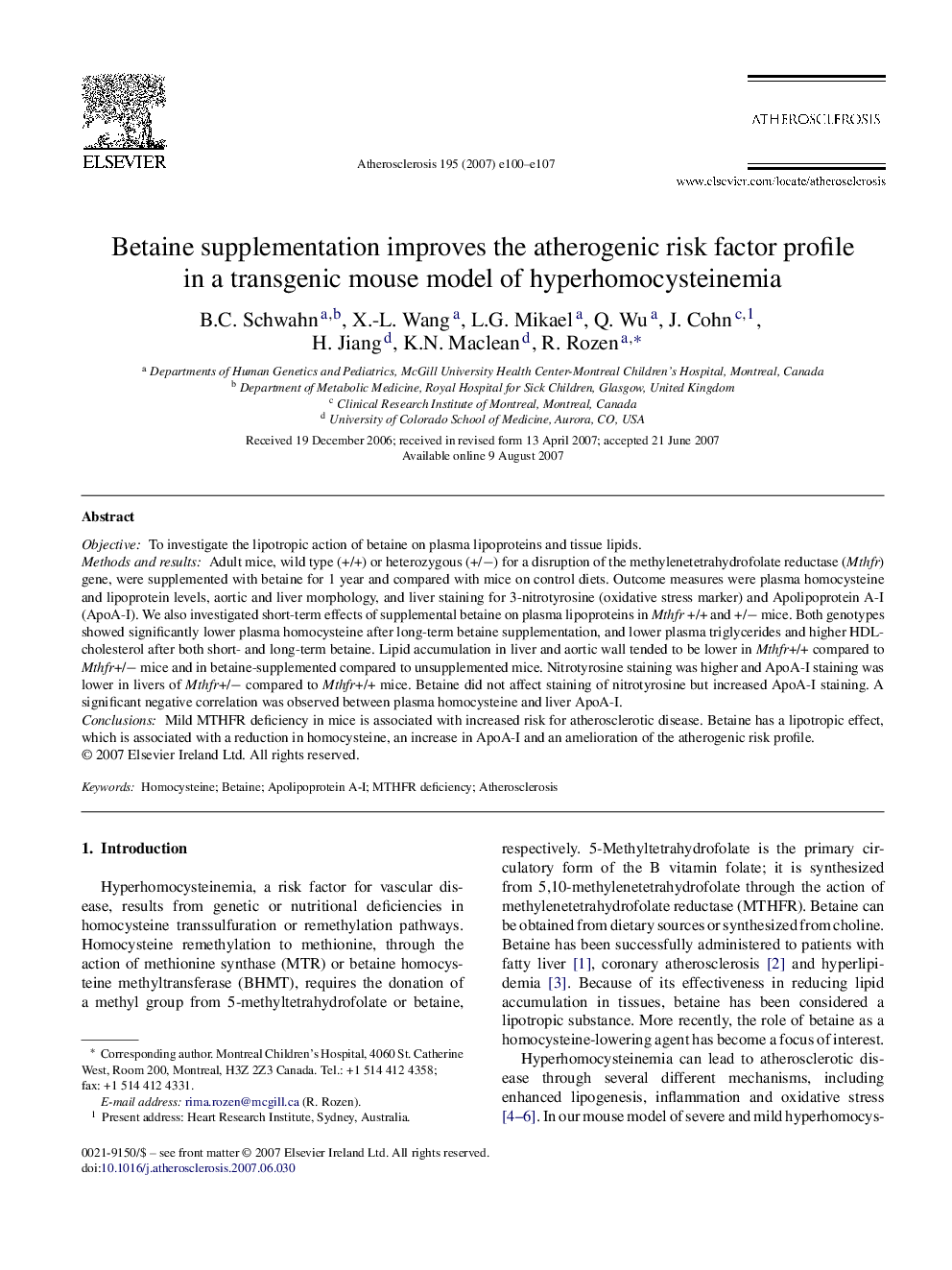| Article ID | Journal | Published Year | Pages | File Type |
|---|---|---|---|---|
| 2894218 | Atherosclerosis | 2007 | 8 Pages |
ObjectiveTo investigate the lipotropic action of betaine on plasma lipoproteins and tissue lipids.Methods and resultsAdult mice, wild type (+/+) or heterozygous (+/−) for a disruption of the methylenetetrahydrofolate reductase (Mthfr) gene, were supplemented with betaine for 1 year and compared with mice on control diets. Outcome measures were plasma homocysteine and lipoprotein levels, aortic and liver morphology, and liver staining for 3-nitrotyrosine (oxidative stress marker) and Apolipoprotein A-I (ApoA-I). We also investigated short-term effects of supplemental betaine on plasma lipoproteins in Mthfr +/+ and +/− mice. Both genotypes showed significantly lower plasma homocysteine after long-term betaine supplementation, and lower plasma triglycerides and higher HDL-cholesterol after both short- and long-term betaine. Lipid accumulation in liver and aortic wall tended to be lower in Mthfr+/+ compared to Mthfr+/− mice and in betaine-supplemented compared to unsupplemented mice. Nitrotyrosine staining was higher and ApoA-I staining was lower in livers of Mthfr+/− compared to Mthfr+/+ mice. Betaine did not affect staining of nitrotyrosine but increased ApoA-I staining. A significant negative correlation was observed between plasma homocysteine and liver ApoA-I.ConclusionsMild MTHFR deficiency in mice is associated with increased risk for atherosclerotic disease. Betaine has a lipotropic effect, which is associated with a reduction in homocysteine, an increase in ApoA-I and an amelioration of the atherogenic risk profile.
